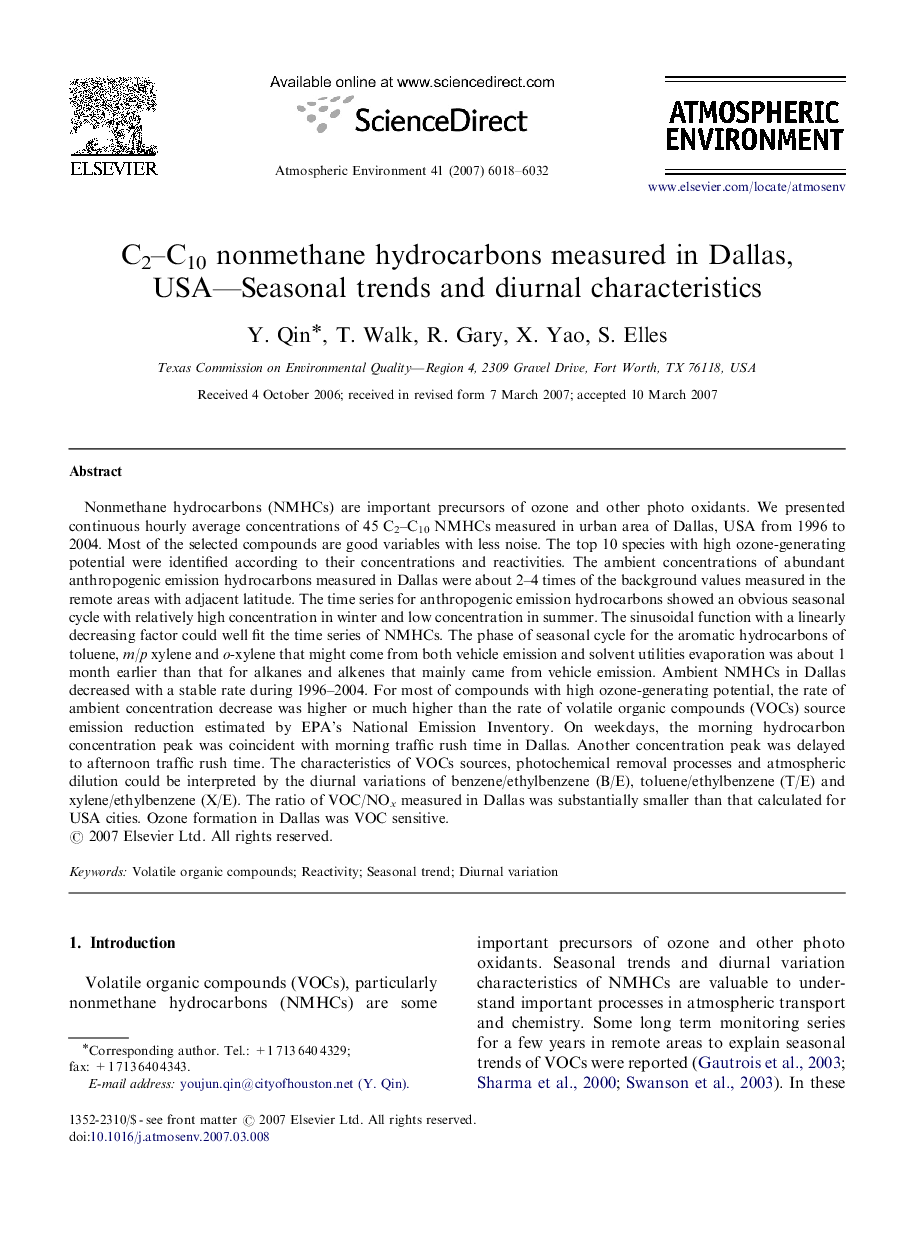| Article ID | Journal | Published Year | Pages | File Type |
|---|---|---|---|---|
| 4442581 | Atmospheric Environment | 2007 | 15 Pages |
Nonmethane hydrocarbons (NMHCs) are important precursors of ozone and other photo oxidants. We presented continuous hourly average concentrations of 45 C2–C10 NMHCs measured in urban area of Dallas, USA from 1996 to 2004. Most of the selected compounds are good variables with less noise. The top 10 species with high ozone-generating potential were identified according to their concentrations and reactivities. The ambient concentrations of abundant anthropogenic emission hydrocarbons measured in Dallas were about 2–4 times of the background values measured in the remote areas with adjacent latitude. The time series for anthropogenic emission hydrocarbons showed an obvious seasonal cycle with relatively high concentration in winter and low concentration in summer. The sinusoidal function with a linearly decreasing factor could well fit the time series of NMHCs. The phase of seasonal cycle for the aromatic hydrocarbons of toluene, m/p xylene and o-xylene that might come from both vehicle emission and solvent utilities evaporation was about 1 month earlier than that for alkanes and alkenes that mainly came from vehicle emission. Ambient NMHCs in Dallas decreased with a stable rate during 1996–2004. For most of compounds with high ozone-generating potential, the rate of ambient concentration decrease was higher or much higher than the rate of volatile organic compounds (VOCs) source emission reduction estimated by EPA's National Emission Inventory. On weekdays, the morning hydrocarbon concentration peak was coincident with morning traffic rush time in Dallas. Another concentration peak was delayed to afternoon traffic rush time. The characteristics of VOCs sources, photochemical removal processes and atmospheric dilution could be interpreted by the diurnal variations of benzene/ethylbenzene (B/E), toluene/ethylbenzene (T/E) and xylene/ethylbenzene (X/E). The ratio of VOC/NOx measured in Dallas was substantially smaller than that calculated for USA cities. Ozone formation in Dallas was VOC sensitive.
